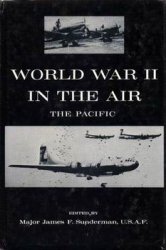The Palaeo-Indian period (c. 10 000-5500 BC) represents the first conclusive evidence of human occupation in the Four Corners region of the American Southwest. In comparison to other areas of the West and Southwest (e. g., the Middle Rio Grande Valley of New Mexico or Colorado’s Western slope), the Four Corners region has seen little in the way of Palaeo-Indian research. Although Palaeo-Indian sites have been found throughout the region, very few have been excavated. Thus, the general discussion of Palaeo-Indian lifeways and archaeology that follows is based largely on evidence from surrounding regions of North America.

The Palaeo-Indian period is characterized as a time when the ancient inhabitants depended primarily on hunting of large game animals. During this time, archaeologists believe that the dominant subsistence strategy involved hunting a limited number of large mammals - what archaeologists describe as megafauna including mammoths, mastodon, giant sloths, and ancient bison. This is not to say that plants were not gathered and eaten - they were. Nevertheless, residential sites were located primarily in areas on the migration routes of the megafauna. Gathering and
Use of plant materials occurred as a secondary activity in these locales. Thus, the majority of Palaeo-Indian sites represent areas where large mammals were killed and butchered. These sites contain large spear points and other tools are found in association with the butchered bones of large mammals.
Four complexes or temporal phases have been defined for the Southwest Palaeo-Indian people: Clovis (10 000-9000BC), Folsom (9000-8000 BC), Plano (8000-7000BC), and Cody (7000-6000BC). Figure 2 Illustrates Clovis period stone tools. General

Figure 2 Photograph of Clovis period tools, including distinctive fluted spear points. Photograph by Jonathan Mabry.
Changes in adaptation and stone tool kits occurred during the transition from one phase to the next. Distinctive projectile point styles are used to separate these phases. In general, the Clovis complex is marked by the hunting of large and currently extinct megafauna (e. g., mammoth, mastodon). The Folsom complex continued the tradition of big game hunting except that large and now-extinct bison was the usual prey. During the Plano phase, a continuation of Folsom traits continued. In fact, some researchers believe that the Plano complex is not temporally separate from the Folsom. The Cody complex is viewed as a time when hunting essentially modern bison comprised the primary subsistence pattern.
Some Palaeo-Indian sites are known from across the Four Corners region, including southeast Utah and southwest Colorado. Similarly, a few Clovis and Folsom projectile points have been reported from northeast Arizona: near the Hopi villages and in the Cow Springs-White Mesa area. The San Juan Basin of northwest New Mexico also has several documented Palaeo-Indian sites.




 World History
World History



![Road to Huertgen Forest In Hell [Illustrated Edition]](/uploads/posts/2015-05/1432477693_1428700369_00344902_medium.jpeg)





